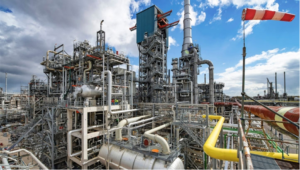‘Blue’ hydrogen reformed from methane could be up to 20% more damaging to the environment over its life cycle than the ‘natural’ gas on which it is based, a new academic report suggests.
Current capture rates of carbon at reforming plants, where steam purges it and hydrogen from natural gas, can be as low as 15%, researchers from Cornell and Stanford universities have found. And that’s without counting the methane emitted during conventional gas extraction.
The carbon footprint of creating supposedly clean ‘blue’ hydrogen from methane may be 60% bigger than burning diesel, a team co-led by Cornell’s Professor Robert Howarth have calculated. It publishes its findings in ‘How Green is Blue Hydrogen’, a paper in the journal Energy Science and Engineering.

Gas supermajors such as BP at Teesside have a heavy commercial interest in promoting hydrogen in its steam-reformed ‘blue’ variety. They cite production economics; reforming hydrogen from a methane-based feedstock is currently far cheaper than electrolysing it using low-carbon power sources such as wind, solar or nuclear.
But the Cornell and Stanford academics say none of the gas companies’ costings have been exposed to peer-reviewed scrutiny.
Howarth said: “Our research is the first in a peer-reviewed journal to lay out the significant life-cycle emissions intensity of blue hydrogen.
“Politicians around the world, from the UK and Canada to Australia and Japan, are placing expensive bets on blue hydrogen as a leading solution in the energy transition”, Howarth noted
“This is a warning signal to governments that the only ‘clean’ hydrogen they should invest public funds in is truly net-zero, green hydrogen made from wind and solar energy.”
Blue hydrogen’s current low extraction efficiencies – with scores of tonnes of methane feed stock needed to make every tonne of hydrogen – add to its shortcomings, the paper argues.
Initiatives to bring down costs of green hydrogen include the HyDeal Ambition venture, backed by 30 European energy companies. In June, President Biden’s energy secretary Jennifer Granholm launched an initiative, Hydrogen Shot, aiming to cut the cost of clean hydrogen by 80% to $1 per kilogramme by 2031.
Shell is opting for the electrolysis route. In June it opened Refhyne, a 10MW PEM ( proton exchange membrane ) electrolyser near Cologne, claimed as Europe’s largest in class.



